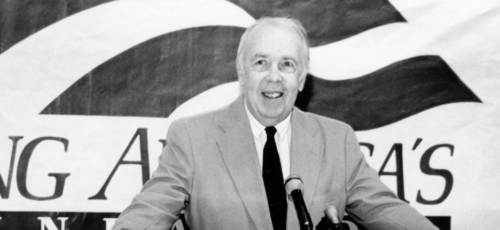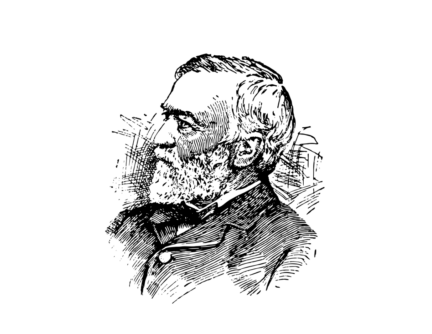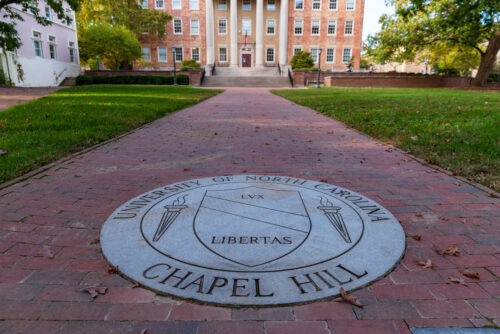In 1925, a donor left two paintings to the city of Plainfield, New Jersey. A judge had to determine whether or not the city could sell the paintings, or if that violated the donor’s will.
Most of the cases involving donor intent involve ideas, usually when a perpetual foundation turns against the ideas of their founders. My book How Great Philanthropists Failed And How You Can Protect Your Legacy describes how such large foundations as the Ford Foundation, the MacArthur Foundation, and the Pew Charitable Trusts are run by people largely or completely opposed to their ideas of their donors.
But what about when the legacy a donor passes on from one generation to the next is art? In general, art museums do a reasonably good job in respecting donor wishes.
But what if a donor leaves art—and doesn’t leave it to a museum? That is the question that faced the city of Plainfield, New Jersey, as it tried to sell two large paintings by the nineteenth-century master Albert Bierstadt bequeathed to it in 1919 by Dr. J. Ackerman Coles. The question Judge Robert Mega of the Chancery Division of the Superior Court of New Jersey (Union County) faced is this: does the city have the right to void the Coles bequest, and if it does, what should it do with the money? Nick Muscavage explores the controversy in an article from the Bridgewater, New Jersey Courier News.
In October 1919, Dr. Coles gave two paintings—“Autumn in the Sierras” and “The Landing of Columbus”—to the city of Plainfield as a gift honoring his father, who lived near Plainfield. The city passed a resolution commending Coles “for his generous and thoughtful gift to the City” and then placed the two paintings in the city library. When the library was remodeled in 1967, one of the paintings was placed in the city courthouse and the other in a bank. Eventually both paintings made their way to the city courthouse, the only building capable of holding the large paintings.
“The Landing of Columbus” shows Native Americans on their knees in front of Columbus. People have been objecting to the painting since the 1960s, and a 2001 review in the New York Times noted that the city covered up the painting for long periods because it considered the painting offensive.
The city made two claims in trying to void the Coles bequest in terms of impracticality. They said that the value of the paintings—according to one appraiser, they’re worth as much as $23 million—is so high that the city can’t afford the security to protect them. Second, “any trust requiring a city to display overly racist and offense (sic) artwork offends public policy.”
The city claims that Coles’s gift “was for a general charitable purpose—to benefit the City of Plainfield in his father’s memory.” They therefore want the Chancery Court to give permission to sell the paintings and use the money to fund scholarships for the children of Plainfield and create a “financial literacy program” for young people.
The city of Plainfield made some substantive points. Dr. Coles did not say the paintings could not be sold. He did not specify a residual purpose if the city no longer wanted the paintings.
The problem the city faced in their case concerns Coles’s will after his death in 1925. Coles was a very precise donor; he gave a lot of $50 gifts, and said whoever bought his house had keep “the front lawn mowed, and the front path free from weeds.” He said that his estate should support 12 people named in the will, and when the last of the 12 people died, the remainder of the state should be divided among a group of charities. He designated the percentage of the estate that should go to each charity.
For reasons that are not clear, Coles’s will took 70 years to clear probate, and his estate was divided among seven charities and Hope College.
The state of New Jersey, as charitable regulator, said it did not oppose the sale and took no position on what should be done with the money raised from the sale. Plainfield city attorney David Minchello argued that the Bierstadt paintings were “a representation of white supremacy,” but he was ordered by Judge Mega not to give his opinion of the paintings but instead to focus on Dr. Coles’s intentions. The Scotch Plains, New Jersey Baptist Church was the only beneficiary of Dr. Coles’s will to request standing, but Minchello said their request should be denied because Coles gave the paintings to the city instead of to the church.
In September, Judge Mega decisively ruled in favor of donor intent. He said that Dr. Coles’s statement that the two paintings were unparalleled “in beauty, merit, and historic value” meant he wanted the paintings to be seen. He declared that he was not going to rule on whether the art was offensive today, but in reading Coles’s bequest, he concluded that his purpose in donating the paintings was to display them “to preserve the memory of his father. By liquidating them, that would be gone.” He then denied the city of Plainfield permission to sell the paintings.







In July 2021, the Appellate Court of New Jersey upheld Judge Mega’s decision and denied the city of Plainfield permission to sell the Bierstadt paintings.